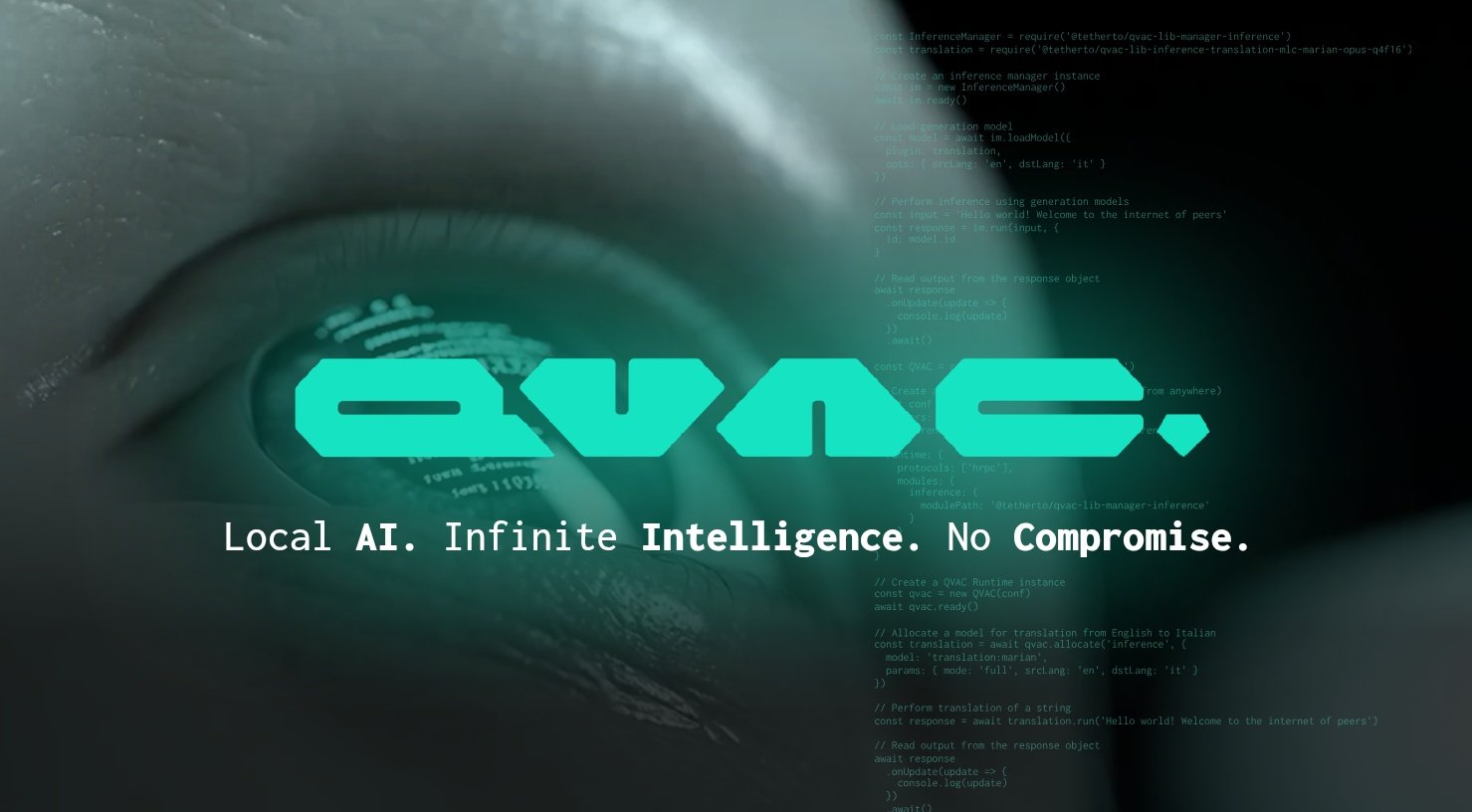Tether Launches QVAC, a groundbreaking decentralized AI platform, on May 14, 2025, marking a significant leap in integrating artificial intelligence with blockchain technology. Designed to operate on local devices without cloud reliance, QVAC empowers users with privacy-focused AI applications and seamless USDT and Bitcoin transactions. This article explores QVAC’s features, strategic importance, and its potential to reshape the AI-blockchain landscape.
A New Era for Decentralized AI
Tether Launches QVAC, introducing a platform that redefines AI accessibility. Unlike traditional AI systems dependent on centralized servers, QVAC operates as an open-source, peer-to-peer (P2P) network, eliminating API keys and single points of failure. According to Tether’s CEO, Paolo Ardoino, QVAC enables billions of autonomous AI agents to interact directly across devices, fostering a scalable, privacy-first ecosystem. This aligns with Tether’s vision to build a foundational technology for science-fiction-inspired AI, as Ardoino noted on social media.
The platform integrates Tether’s Wallet Development Kit (WDK), enabling non-custodial transactions with USDT and Bitcoin on any device or application. This feature enhances QVAC’s utility, allowing developers to create decentralized applications (dApps) that combine AI capabilities with secure crypto payments. Additionally, QVAC incorporates Keet, Tether’s P2P messaging app, to support encrypted, distributed data interactions.
Strategic Investments and Market Context
Tether Launches QVAC as part of its broader push into the AI-blockchain intersection, a market valued at over $25 billion, per industry estimates. Tether’s prior investments in AI infrastructure, including $420 million in 2023 and a $610 million loan in 2024 to Germany’s Northern Data, underscore its commitment. These funds bolstered data center capabilities, critical for QVAC’s decentralized runtime, which operates independently of traditional cloud providers.
The launch follows Tether’s strategic roadmap announced in March 2024, aiming to lead the convergence of AI and crypto. QVAC’s modular architecture supports flexible dApp development, positioning Tether to compete with platforms like SingularityNET and Fetch.ai. Online discussions highlight enthusiasm, with users praising QVAC’s privacy focus, though some note the challenge of scaling a device-based AI network.
Read more: XAUT by Tether Backed by 7.7 Tons of Gold
Key Features and Innovations
Tether Launches QVAC with a focus on autonomy and scalability. The platform’s core is a decentralized AI runtime that runs on local hardware, ensuring data privacy and reducing reliance on Big Tech. Its P2P network enables AI agents to self-adapt and collaborate, creating a dynamic ecosystem for developers and users. The integration of USDT and Bitcoin payments via WDK allows seamless transactions, from micro-payments to large-scale transfers, within AI-driven applications.
QVAC’s use of Keet enhances secure communication, enabling encrypted data exchanges across the network. This makes it ideal for privacy-sensitive applications, such as secure messaging or decentralized finance (DeFi) tools. The platform’s open-source nature invites global developers to build innovative dApps, potentially expanding its use cases across industries.
Implications for AI and Crypto

Tether Launches QVAC, setting a new standard for AI-blockchain integration. With USDT’s $150 billion market cap, Tether’s entry into AI could drive mainstream adoption of decentralized technologies. QVAC’s device-based approach addresses privacy concerns, appealing to users wary of centralized data collection. For developers, the platform offers tools to create secure, scalable dApps, potentially disrupting sectors like finance, healthcare, and IoT.
The launch could intensify competition in the AI-blockchain space, challenging established players. However, QVAC’s success hinges on user adoption and developer engagement. Community sentiment is optimistic, with many viewing it as a game-changer for privacy-first AI, though scaling challenges remain a topic of debate.
Conclusion
Tether Launches QVAC, a decentralized AI platform that empowers users with privacy, autonomy, and seamless USDT and Bitcoin transactions. By leveraging artificial intelligence and AI-blockchain innovations, Tether aims to redefine decentralized technology. With a robust infrastructure and open-source ethos, QVAC could lead the next wave of AI-driven dApps, solidifying Tether’s role in the evolving digital economy.

